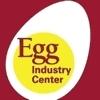Strategies to manipulate early-life microbiota of poultry toward beneficial bacterial growth
Recent advances in multi-omics highlight the importance of early-life commensal microbiota for mediating poultry immunocompetence and health. Consequently, there has been a growing demand for early manipulation strategies of intestinal microbiota in order to reduce pathogen colonization, advance immune system development and optimize growth. We used two different experimental models to address how early commensal bacteria exposure could affect the modulation of intestinal microbiota at day of hatch (DOH). In Experiment (Exp) 1, embryos at 18 embryogenic day were introduced in ovo either 200 µL of saline (CON) or 102 CFU/ mL of lactic acid bacteria (LAB) into the amnion. On DOH, the gastrointestinal tract (GIT) of chicks were collected for 16s RNA sequencing analyses. In Exp 2, treatments included a spray application of 9.0x106 CFU/mL of LAB or control (CON; without probiotic) through the top of the hatch cabinets containing eggs from poor-performing duck breeder flocks. The probiotic was applied 5 times every 4 hours on d27 of incubation. On DOH, GIT was collected for enumeration of bacteria using MRS, MacConkey and BD CHROMagar selective agars. Statistical differences were determined using Student’s t-test. In Exp 1, there was a significant increase (p<0.05) of Lactobacillaceae and reduction of Enterococcaceae populations in LAB treated chicks. The relative abundance of Enterobacteriaceae was similar to CON. In Exp 2, recovery of LAB from ducklings GIT was significantly higher in LAB treatment as compared to CON. Similarly, the application of LAB-probiotic in the hatcher cabinets decreased (p<0.05) the recovery of Gram-negative from GIT of ducklings. In both experiments, the early exposure to LAB probiotics was able to modify the microbiota composition concerning desirable bacteria growth in DOH poultry. Application of LAB in the hatcher cabinets decreased colonization of Gram-negative in GIT of new hatched ducklings suggesting that these strategies have potential to minimize undesirable microbial colonization commonly acquired in the hatchery. Here, in this study, we provided practical interventions to manipulate the microbiota structure toward beneficial bacteria colonization as means of enhancing health and performance in poultry.
Key Words: Ducks, new hatched chicks, microbiome, probiotics, lactic acid bacteria.
Abstract presented at the International Poultry Scientific Forum during IPPE 2020.



Very nice work it is to get microflora of the chicks in hatchery, which is a good idea and would help in developing correct microflora for chicken. It is nice work.



















